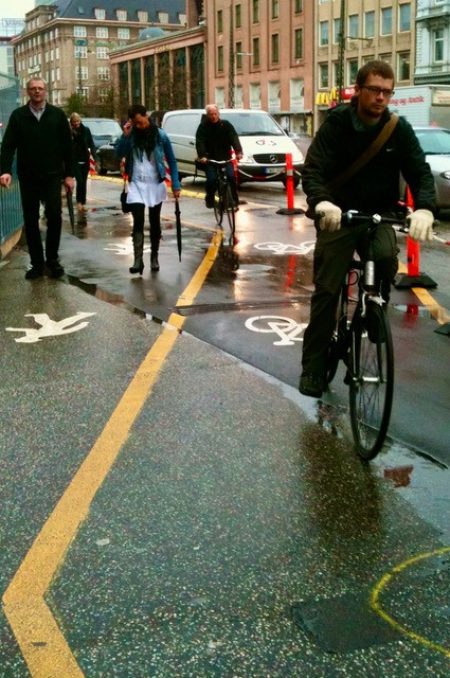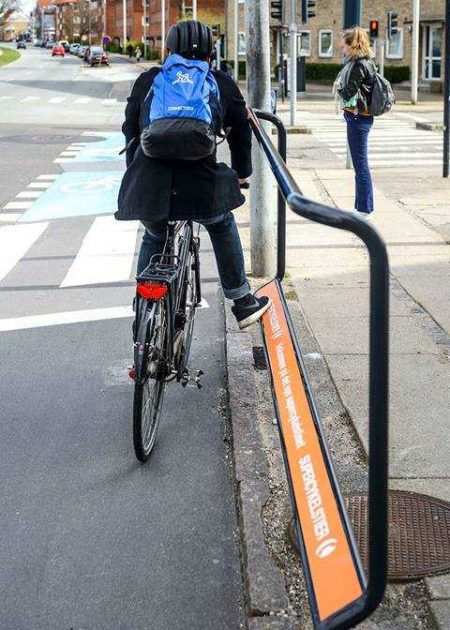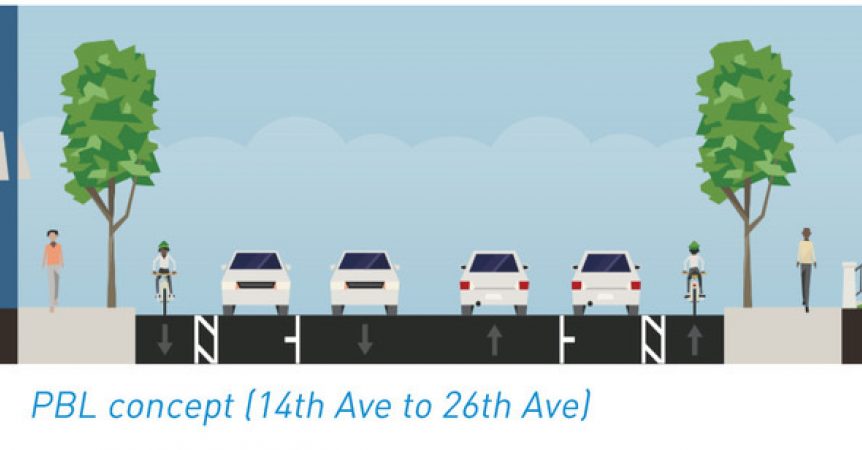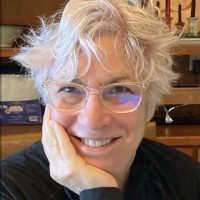A Seattle pilot project: Parked cars protecting bicyclists
Lessons from Denmark - Action At Home
Sep 24, 2021
By Patricia Chase with thanks to Lyle Bicknell and Dongho Chang
In Danish cities, when it comes to options for getting around, there is a place for everyone and everyone has their place.
Most Danish cities have separated pedestrian, bicycling, and vehicle lanes. Keeping everyone separated not only makes people safer, it makes them feel safer. The perception of safety is very important for people to get on a bike in an urban environment.

Thanks to Scan Design Foundation, hundreds of elected officials, city planners and bicycle planners from Seattle, Portland, Bellevue and Spokane have been able to experience world class bicycle infrastructure for themselves on i-SUSTAIN study tours to Denmark. They have been joined by local business leaders and NGO executive directors. This has lead to continually improving bicycle infrastructure here.
Seattle is a good example of how lessons from Copenhagen have been adapted here. On a study tour several years ago to Denmark, former Seattle City Council member, Mike O’Brien, challenged Lisa Libby, former sustainability director for Portland, on which city would install a Denmark-style bicycle counter first. Seattle was the winner with Portland following two weeks later. Now cities across the country have bicycle counters. Having actual data informs decisions like nothing else. WSDOT staff working on SR 520 considered bicycling only a recreational activity; however, they were forced by the community to provide a cycle component to the corridor when they saw the actual bicycle counter data (week day vs. week end, rush hour vs. other times) which proved people were using bicycling as a form transportation.
Have you noticed all the streets in Seattle in which parked cars protect bicyclists from moving vehicles? For years, our study tour participants have learned about “pilot projects,” in Denmark which are implemented “temporarily” to get the public used to a change and then casually morph into a permanent change. Using parked cars to protect bicyclists was such a pilot project. All it took was restriping the street in a different way such as the East Union climb up Capitol Hill. This is a much better solution than having the bikes riding alongside traffic, but it is still not optimal.
Optimal is 7th Ave. in the Denny Triangle area of Seattle. The best bicycling infrastructure here was a direct result of three SDF scholarship recipients and their experiences of bicycle infrastructure in Denmark: Lyle Bicknell, City of Seattle Urban Designer, Dongho Chang, until recently City of Seattle Traffic Engineer (now Director of Transportation Options for WSDOT) and former City Council member, Tom Rasmussen.

As part of developing a new 7th Ave. office building, Amazon needed to provide a public benefit. Dongho showed the corporation’s Vice President of Global Real Estate and Facilities, John Schoettler, a powerpoint of the pedestrian and bicycle infrastructure he experienced in Copenhagen. Lyle let Schoettler know that Seattle could build the same high quality bicycle infrastructure because he had experienced it in Copenhagen and knew it was possible to do here. Rasmussen’s role was to generate the political headwinds that eased the public-private partnership between Amazon and the city. Schoettler bought into the concept knowing that Amazon’s employees don’t want to deal with traffic. What has been created is a protected corridor which separates pedestrians, bicyclists and vehicles in a tree-lined park-like setting. The level of detail to make cycling more comfortable even includes the first Copenhagen style bike rest so that bicyclists don’t have to get off their bike seat when they stop.
Denmark pioneered the idea of a place for everyone and everyone in their place when it comes to moving people around the city, but Seattle has learned its lessons well thanks to SDF and the dedicated public servants it has funded to join us in Denmark.
The i-SUSTAIN study tours are a great example of how Scan Design Foundation facilitates the active exchange of ideas between Denmark and the U.S. Learn more about how Scan Design Foundation positively impacts local communities through cultural exchange on the new Scan Design Foundation website.

